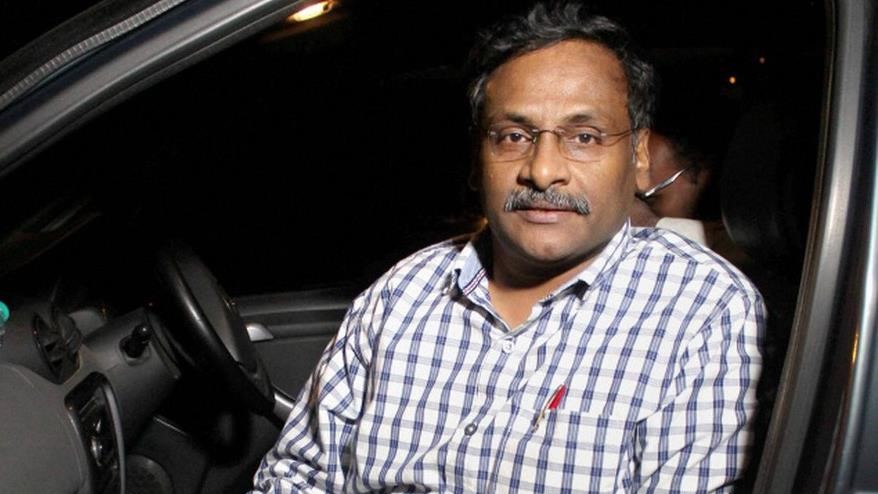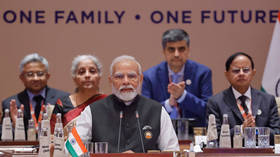NOVANEWS

By Sajjad Shaukat
It is most regrettable that by ignoring the modern global trends like renunciation of war, peaceful
settlement of disputes and economic development, India has activated dangerous arms race in
South Asia.
In this respect, India test-fired its longest range surface-to-surface nuclear ballistic missile Agni-
5 from the Abdul Kalam Island off the coast of Odisha on December 26, this year.
Agni-5 is capable of striking a target of more than 5,000 km away. The missile can carry a
nuclear warhead of more than one tone. It can target almost all of Asia including Pakistan and
China and Europe.
While, the Agni-6 is reported to be in early stages of development and the most advanced
version, with a strike-range of 8,000-10,000 km.
New Delhi already has in its arsenal—the Agni 1, 2, 3 and 4 missile systems and supersonic
cruise missiles like Brahmos.
According to Times of India, “Once the Agni-V is inducted, India will join the super exclusive
club of countries with ICBMs (missiles with a range of over 5,000-5,500km) alongside the US,
Russia, China, France and the UK.”
It is notable that in its report, the Stockholm International Peace Research Institute (SIPRI) had
disclosed on February 22, 2015 that India is the world’s largest recipient of arms—“India (14
percent of global arms imports), China (4.7 per cent), Australia (3.6 per cent) and Pakistan (3.3
per cent).” In its report of 2016 also SIPRI pointed out India’s arms-import.
New Delhi’s military is acquiring a slew of new equipments from combat aircraft to submarines
and artillery. It is currently finalising a deal with France’s Dassault Aviation to buy 126 Rafale
fighter jets in a contract worth an estimated $12 billion.
Although peace and brinksmanship cannot co-exist in the modern era, yet India seeks to
destabilize Asia through its aggressive designs, activated with new arms race.
And as part of the double standard, America brushed aside the Indian poor record regarding the
safety of nuclear weapons and materials. And despite, Indian violations of various international
agreements and its refusal to sign Non-Proliferation Treaty (NPT), Comprehensive Test Ban
Treaty (CTBT) and Additional Protocol with the International Atomic Energy Agency (IAEA),
Washington signed a pact of nuclear civil technology with New Delhi in 2008. During American
President Barack Obama’s visit to India, on January 25, 2016, the US and India announced a
breakthrough on the pact which would allow American companies to supply New Delhi with
civilian nuclear technology.
On November 2, 2010, US agreed to sell India the most expensive—the new F-35 fighter jets
including US F-16 and F-18 fighters, C-17 and C-130 aircraft, radar systems, Harpoon weapons
etc. Besides acquisition of arms and weapons from other western countries—especially Israel,
America is a potential military supplier to India. US also pressurized IAEA and the Nuclear
Suppliers Group to grant a waiver to New Delhi for obtaining civil nuclear trade on larger scale.
In fact, US wants New Delhi to continue anti-China and anti-Pakistan role. Beijing is
apprehensive about the emerging threat, as during the last visit of Obama to New Delhi, the
intent of President Obama and Indian Prime Minister Narendra Modi was quite clear, while
mentioning about free sea lanes and air passages in the South China Sea.
In this connection, tension arose between India and China in the recent past, when Indian army
erected a military camp in Chumar Sector of Ladakh at the Line of Actual Control (LAC)-
disputed border, situated between the two countries. Similarly, tension remains over the Line of
Control (LoC) in Kashmir, as India keeps on violating the ceasefire-agreement in wake of the
unresolved issue of Kashmir.
It is mentionable that under the Pak-China pretext, Indian ex-Army Chief, General Deepak
Kapoor disclosed on December 29, 2010 that the Indian army “is now revising its five-year old
doctrine” and is preparing for a “possible two-front war with China and Pakistan.”
It is noteworthy that after 9/11, both India and Israel which had openly jumped on Bush’s anti-
terrorism enterprise are acting upon a secret diplomacy, targeting Pakistan and China. It could be
assessed from the interview of Israel’s ambassador to India, Mark Sofer, published in the Indian
weekly Outlook on February 18, 2008. Regarding India’s defense arrangements with Tel Aviv,
Sofer had surprisingly revealed, “We do have a defense relationship with India, and “with all due
respect, the secret part will remain a secret.” In fact, with the support of Israel, New Delhi has
been acquiring an element of strategic depth by setting up logistical bases in the Indian Ocean for
its navy.
Particularly, fast growing economic power of China coupled with her rising strategic relationship
with the Third World, and especially Pakistan—after signing of agreement, “China-Pakistan
Economic Corridor” which is, though for the benefit of South Asia, but, has irked the eyes of
Americans, Indians and Israelis. Owing to jealousy, America desires to make India a major
power to counterbalance China in Asia.
Notably, on July 20, 2011, while hinting towards Pak-China ties, the then US Secretary of State
Hillary Clinton urged India to be more assertive in Asia, saying that as American ally, the
country should play more of a leadership role. She explained, “India has the potential to
positively shape the future of the Asia-Pacific.”
It is owing to the US dual policy that New Delhi openly follows threatening diplomacy in South
Asia. In this context, in May 1998 when India detonated five nuclear tests, it also compelled
Pakistan to follow the suit. The then Defense Minister George Fernandes had also declared
publicly that “China is India’s potential threat No. 1.” Now, by setting aside peace-offers of
Beijing and Islamabad, New Delhi has entangled the latter in a deadly arms race.
While, international community has been making strenuous efforts for world peace in wake of
global financial crisis and war against terrorism, but India has particularly initiated deadly
nuclear arms race in South Asia where people are already facing multiple problems of grave
nature. Majority of South Asian people are living below the poverty level, lacking basic facilities
like fresh food and clean water. Yielding to acute poverty, every day, some persons commit
suicide.
Even, Indian civil society organizations, while complaining of excessive defense spending,
recently, pointed out that the government spends very little amount for the betterment of people.
Indian defense analyst Ravinder Pal Singh, while indicating New Delhi’s unending defense
expenditures at the cost of poverty-alleviation, calls it guns-versus- butter question.
Nevertheless, by ignoring regional problems and especially resolution of Indo-Pak issues,
particularly the Kashmir dispute which remains a nuclear flashpoint, Indian rulers state that they
do not have any belligerent policy. But, it becomes a big joke of the 21st century, reminding a
maxim, “armed to the teeth, but no enemy”, if we take cognizance of India’s increasing defense
purchases and her aggressive designs. Nonetheless, if India continues activating dangerous arms
race in South Asia, it can occlude in a nuclear war.



